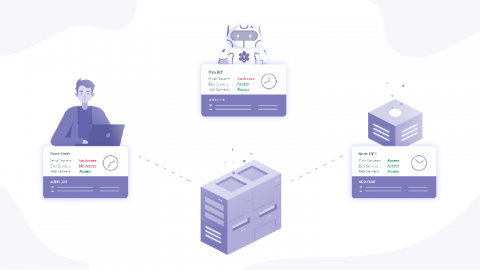Security | Threat Detection | Cyberattacks | DevSecOps | Compliance
Technology
Introducing remediations, Python support and more...
Note: This is Bearer's monthly newsletter. Subscribe below to get it in your inbox. I hope you are doing well with this never-seen-before-worldwide-lockdown. The whole Bearer team is locked down as well, but still improving your beloved product! We have a lot of updates and awesome new features for you to explore today. Here is a short overview to get you started!
Cloud Under Pressure: Keeping AWS Projects Secure
Amazon Web Services (AWS) allow organizations to take advantage of numerous services and capabilities. As the number of available options under the cloud infrastructure of the company grows, so too do the security risks and the possible weaknesses. AWS Project owners need to take extra precautions by following some platform-specific advice. Amazon is constantly working on adding new features and implementing new changes in its current offering, as well.
Demo: Netskope, Okta, and Exabeam working together
Copy and Paste Code: How to Lose Your Job Using Open Source Code
Have you ever wondered whether it’s ok to copy and paste code from an open source project? If you have, you’re not alone. A quick look around several developer websites shows a number of variations on this age-old question. It is never ok to copy and paste code from an open source project directly into your proprietary code. Don’t do it. Just don’t. Even if you’re on a tight deadline. Even if it’s only one loop.
From Zero to Zero Trust
Blockchain, IOT, Neural Networks, Edge Computing, Zero Trust. I played buzzword bingo at RSA 2020, where the phrase dominated the entire venue. Zero Trust is a conceptual framework for cybersecurity that characterizes the principles required to protect modern organizations with distributed infrastructure, remote workforces, and web connected applications.
The State of Open Source Security Management RSA 2019
Panel Open Source Security - Weighing the Pros and Cons
5G Technology: How to Make Sure the Benefits Outweigh the Security Risks
It’s hard not to say that 5G technology brings a lot of benefits. 5G entails faster download speeds, and yes, if you have a 5G-enabled handset, you could hear and appreciate the speed increases for videos, gaming, etc. However, 5G provides added benefits that go way above those for the everyday user. Let’s take a look at the high speed and low latency of 5G. There are a lot of areas or industries that require pinpoint accuracy and precision.
Open Source Analysis Extends Your Visibility
When we think of open source analysis, security is often the first thing that comes to mind. But open source analysis is so much more than just security. It gives you visibility into your codebase to help you understand and manage your open source components. In this blog, we’ll define open source analysis, look at why it’s important to your business, and describe the characteristics of an effective open source analysis framework.










